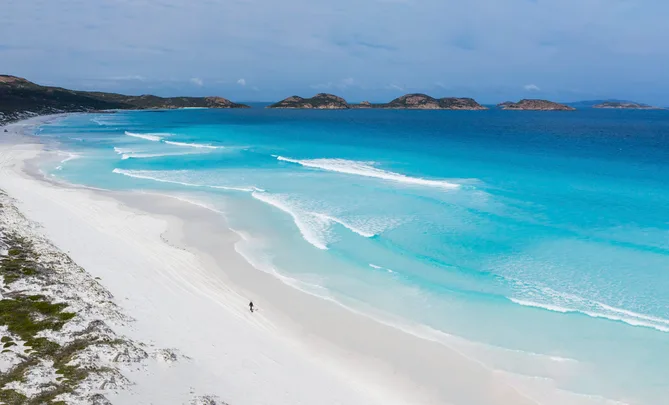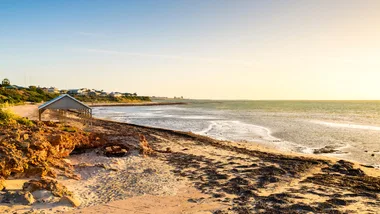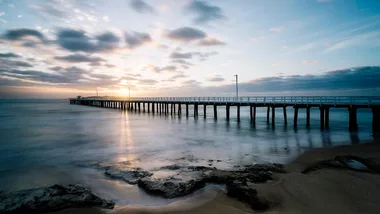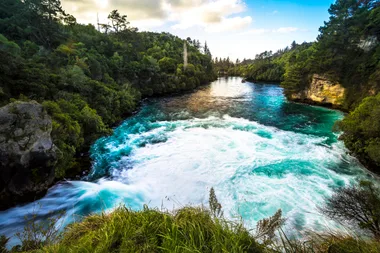White sand beaches can be terribly noisy. They appear innocently moon-bright, fine as icing sugar and powdery-soft, but walk along their sandy shores and the plodding is less softly-softly, more non-stop squeak, like wet sneakers on a lino floor. It’s as if someone forgot to add the dreamy soundtrack to the postcard-perfect views.
We have arrived at Lucky Bay in Cape Le Grand National Park in South West Australia, the whitest (and squeakiest) beach in Australia. Like nearby Hellfire Bay (number two on the list), it won the title in 2006, when afternoon banter over beers for soil scientist Noel Schoknecht turned into earnest scientific pursuit.
White sands aside, it’s stunning; a rugged, achingly beautiful landscape of windswept heaths and granite bluffs, perfect breaks and sucker-punch turquoise, cobalt and aquamarine
waters. Kangaroos laze on its pure white sands or snooze on beds of tangled seaweed, like day-trippers at a Bali beach club.
It’s made Lucky Bay a hotspot for Instagrammers, but it’s easy to escape the crowds. Thistle Cove, a short drive away, is empty when we arrive, the afternoon sun sending sparks of luminescent gold on the silvery tide. A highlight of my south west Australian tour.
It’s one of a handful of doppelgänger bays found along the 15km coastal trail, where chancing upon an echidna or goanna sunning itself on the rocks is as likely as finding a blissfully secluded beach, squeaky-white sands and crystal-clear waters guaranteed.
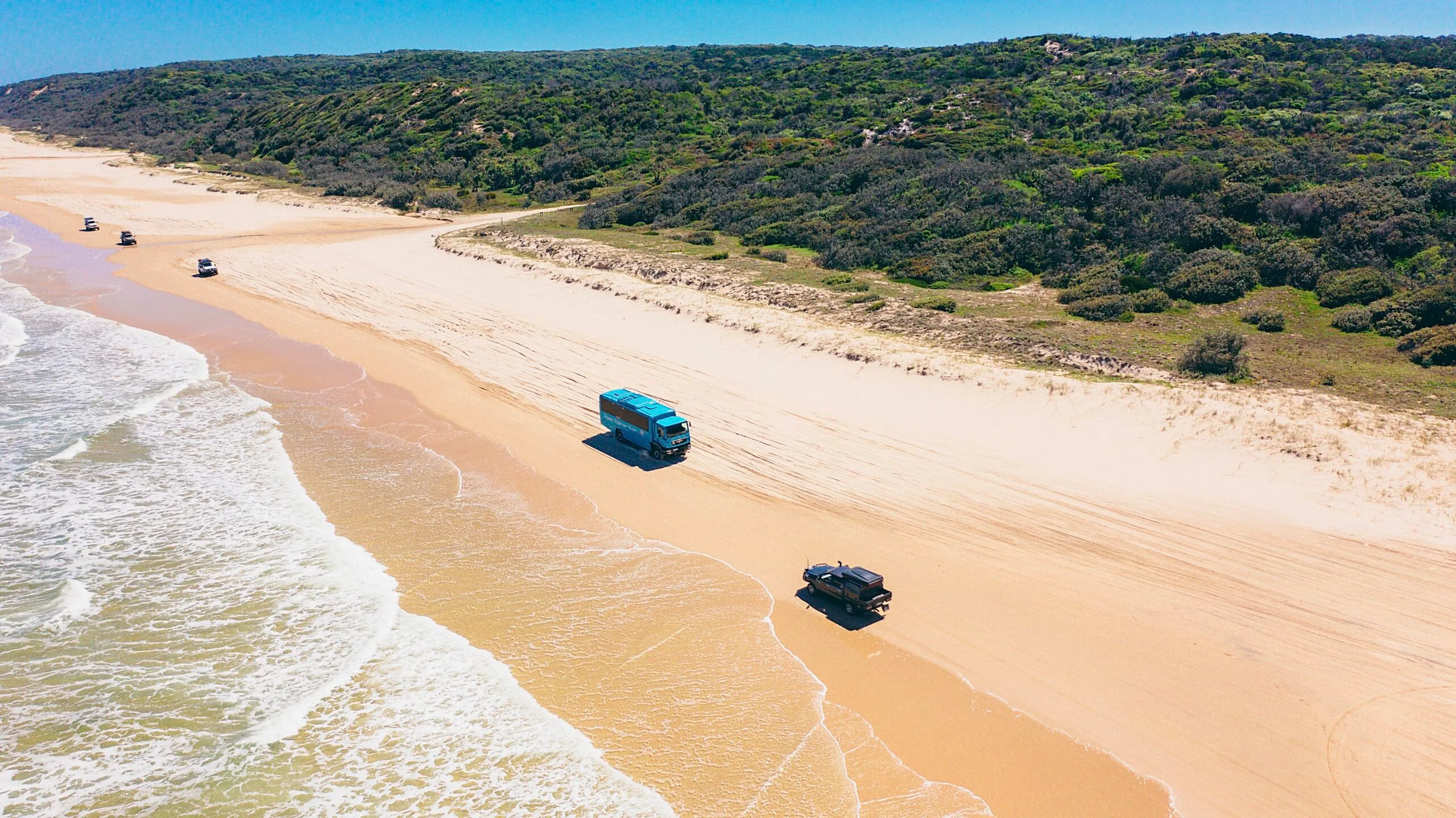
I am on a 15-day Western Wonderland tour of south western Australia with AAT Kings , a guided holiday taking in the best of the west’s Golden Outback, South West and Coral Coast regions, with stops in Margaret River, Fremantle and Perth.
Western Australia’s best kept secrets are in the South West
It’s an hour from Lucky Bay to Esperance, a sleepy seaside town that sits on traditional Wudjari land. After a night in Kalgoorlie, the shift from hot reds to cool blues and greens is as dramatic (and welcome) as closing a book. Gone, the eye-searing, indelible (for my white sneakers) vermilion dirt of the Golden Outback.
Instead, we spool past sandy plains and wild samphire scrub, scribbly mallee trees and mobs of emus and Grey Eastern kangaroos.
Esperance is on the Recherche Archipelago, a dazzling chain of 105 mostly uninhabited islands where marine and birdlife abound.
Strolling the boardwalk at dusk, I’m mesmerised by the blobs of dusky blue islands anchored on the horizon.
In the morning, Albany in our sights, we tour the Great Ocean Drive, a stunning 40km loop of blinding white sands, smooth granite cliffs and impossibly aquamarine waters that deepen to sapphire blue in the bay.
“That blue is from silica in the white sands which refracts the sunlight,” says AAT Kings Travel Director Carolyn Tipper. When the sun hits, the sea sparkles.
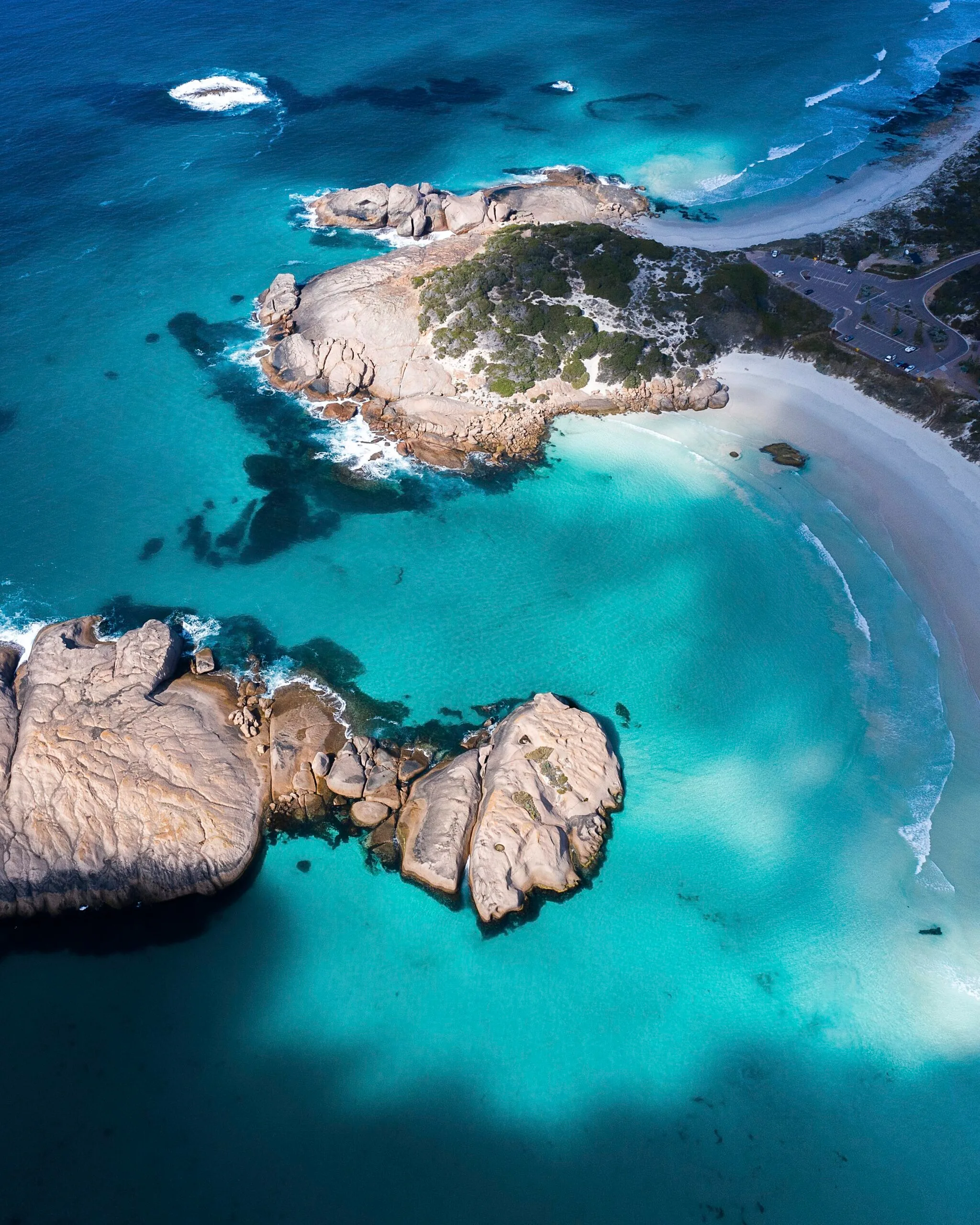
Blue Haven, Salmon Beach and Twilight Cove pass in a twinkle of blue. Sand dunes whipped to snowy peaks by Southern Ocean winds are pushed higher than your average house. Drifts of sand cover the road like snow. The pink lake is no longer pink, having lost its rosy hue more than a decade ago.
“The one you see in ads is out on one of the islands [Lake Hillier on Middle Island] and you have to take a flight to see it,” says Carolyn.
At Observatory Point, sheer cliffs drop away to thunderous surf. It’s gusting and blustery, these winds that blow all the way from Antarctica, and I shiver at the polar chill. From the lookout, the coastline appears tiny: two basins of blue separated by a narrow band of road. Then the sun comes out, and it’s like we’ve zoomed in on a person wearing cool shades.
The magic of the Great Southern
The Southern Ocean storms and rages. It crashes and smashes, surges and roars, pummelling the surf battered granite walls of The Gap, a narrow channel in Torndirrup National Park. I spend long minutes transfixed by the hypnotic push-pull of the sea, 40 metres above the action on a suspended viewing platform.
Local guide Tim Newbold has brought us out here on a half-day tour of Albany’s natural wonders. He points to the fractured coastline, where 45 million years ago Australia broke away from the supercontinent Gondwana. If I squint, I can almost imagine its torn edges, etched cliffs and bays, a jigsaw piece for Antarctica, some 6200-kilometres away.
Along this coastline buffeted by squalls and tempests, wind farms are as frequent as rainbows. At Albany Wind Farm, one of the largest, we marvel at the crop of windmills planted across the Torndirrup Peninsula like some alien army standing guard against the salt-lashed sea.
At one of two lookouts, easily reached from the carpark, we clock the huge turbines rotating slower than a snail despite the battering winds. “These 18 windmills supply 80 per cent of Albany’s energy. There’s only 18 days a year when there isn’t enough wind,” says Tim.
On the way back, a fortuitous wrong turn lands me on the Wind Farm Walk. The path is easy and winds beneath giant turbines, reminiscent of triffids of Sci-Fi fame, and out along a section of the 1000km Bibbulmun Track that stretches from Albany to Perth. The sea pushes to shore, a breath-taking bolt of white-capped blue, and whales pop up and wave a fin hello. Whale watching in Western Australia is one of those pinch-me moments!
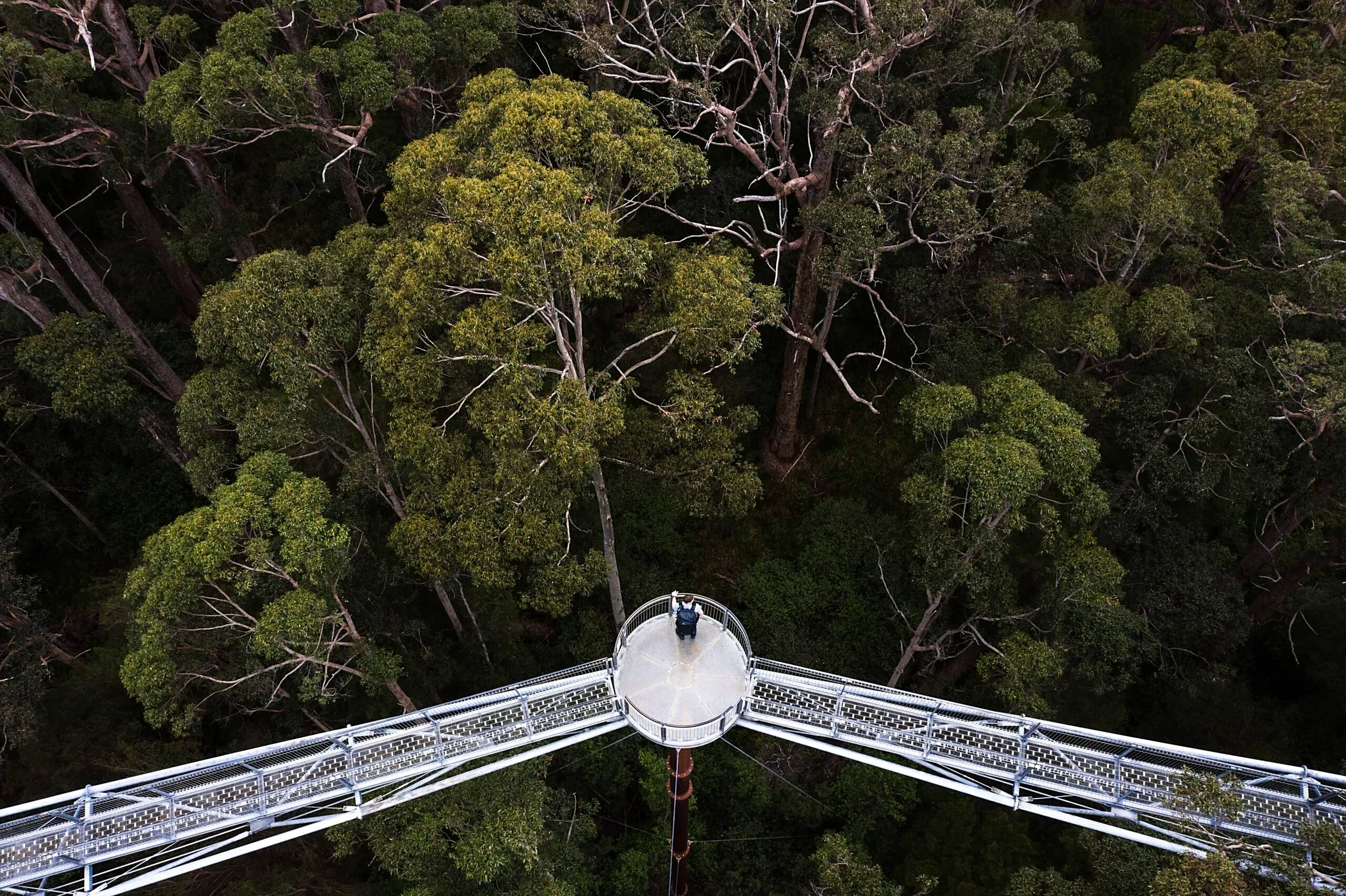
It’s 90 minutes to the Valley of the Giants, a soaring karri forest on traditional Noongar land. I walk through living trunks as big as a car or stand in others, 400 years old and dark as a cave, soaking up the ancient wisdom.
It’s a different tonic on the treetop walk, a network of metal gangways strung 50m high in the canopy. Trees whisper. Sunlight dances. Birds swoop and twitter. Nature is singing! It’s enough to get me high.
